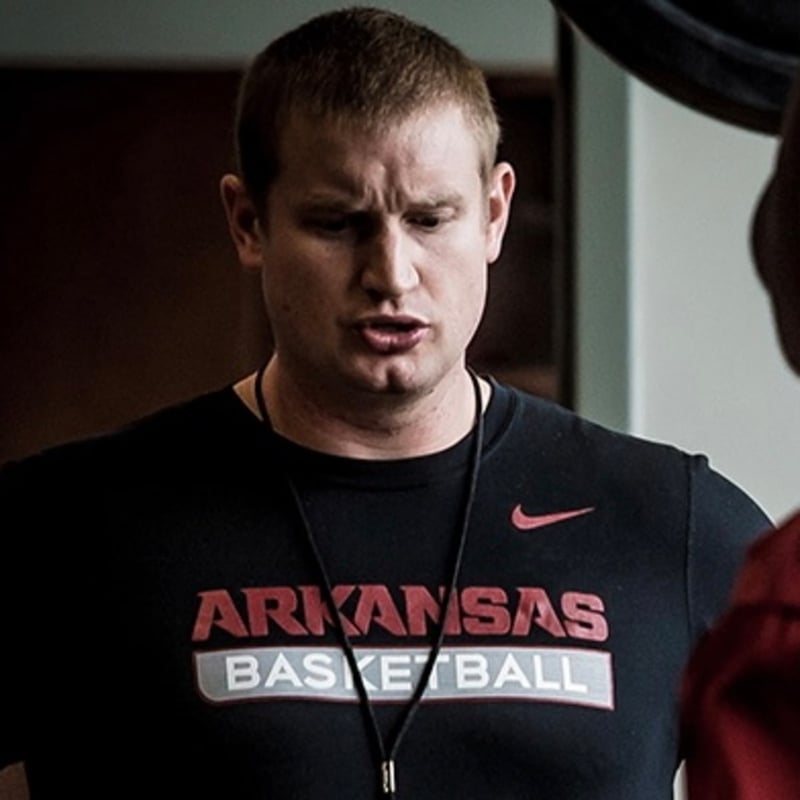
This weeks guest post comes from Adam Petway, the head strength coach of the Men’s basketball team at the University of Arkansas. Petway oversees all aspects of the Arkansas men’s basketball strength and conditioning program, including its unique performance training for head coach Mike Anderson’s up-tempo style and nutritional guidelines. In his time with the Razorbacks, Petway has worked diligently to ensure that his strength and conditioning style reflects Anderson’s expectations. Aligning with the #Fastest40 mantra, Petway’s workouts are explosive and fast. Petway’s training platform is functionally bent and is specific to demands of the game and to the athlete’s needs. He works closely with each player to develop individualized strength and conditioning programs.
Here at Arkansas our style of play is very up-tempo. We are known as the fastest 40 minutes in basketball and we press the entire length of the court. Our program started implementing Sparta Software Technology in April of 2015. When we initially tested our athletes with the force plate technology we noticed that a majority of our athletes had a linear scan. This is a scan where DRIVE is the highest variable. DRIVE is the ability to produce concentric force over long periods of time and using momentum to reach top end speed. Athletes that have a linear scan are typically wide receivers in football and track athletes. Having this information immediately validated the use of the technology because it gave us a baseline on how the scan of an Arkansas Basketball athlete should look.
A linear scan for a basketball athlete is unique. Basketball is a multi-directional reactive sport. It is for this reason that most performance coaches would expect and prefer their basketball athletes to have high EXPLODE. This variable is correlated with the ability of an athlete to brace through their torso to change directions or resist an opposing force. This is not necessarily the case for our athletes. Being able to understand this difference between our athletes and the ‘typical’ basketball player has given us a competitive edge. Not only do we run the fastest 40 minutes in basketball but now we can precisely train for that as well.
Athletes that play in our system must meet certain physical perimeters to perform at a high level. Below on the left, is the initial scan for one of our guards. Because his DRIVE was low he lacked mobility in certain areas and often times lacked the ability to use momentum to run our transition offensive and get to certain spots in our press. Since a basketball court is only 94 feet in length it is rare for an athlete to reach top end speed during competition. That being said, it’s still extremely important for our athletes to have the ability to build force through momentum. For this particular athlete we prescribed a lot of unilateral exercise variations we believe in at Arkansas such as split squats, single leg deadlift, and vertical hops. As well as heavy soft tissue work applied to the gluteal complex, piriformis, and TFL. These prescriptions increased mobility and the athlete’s ability to build momentum during transition. Below on the right is the re-scan after 6 weeks of training with these exercise prescriptions. This is an ideal scan for a guard in our system.

As a performance coach you are constantly evaluating your athletes. This evaluation process is particularly important for athletes that are new to the program. Having a signature baseline of how athletes in our program should scan makes it easy to prescribe exercise selections to each athlete new athlete in our program. As the athlete adapts to the training environment that we create for them we can adjust the exercise prescription and training stimulus based on how the signature scan changes. The Sparta Signature below on the left is an example of one of our newcomers. His DRIVE is excessive, causing an injury risk, so we needed to work on his LOAD and EXPLODE. LOAD is indicative of eccentric strength. Prescribing different squatting variations such as squats, front squats, and 1 leg squats have helped to improve his LOAD. Exercise selections such as deadlifts, cleans, and suitcase deadlifts improve resiliency within the torso to develop explode. Below on the right is his re-scan following these exercise prescriptions. Again, this scan is typically what we want our athletes’ scans to look like.

Implementing Sparta Software Technology has made my job as a Performance Coach easier because it gives me a baseline of evaluation for each of our athletes. It allows me to monitor any fluctuation of Sparta signature variables during different times of the season and has been an invaluable tool in developing training regimens that are specific to the individual athlete and reveals their greatest strengths as well as areas for improvement.